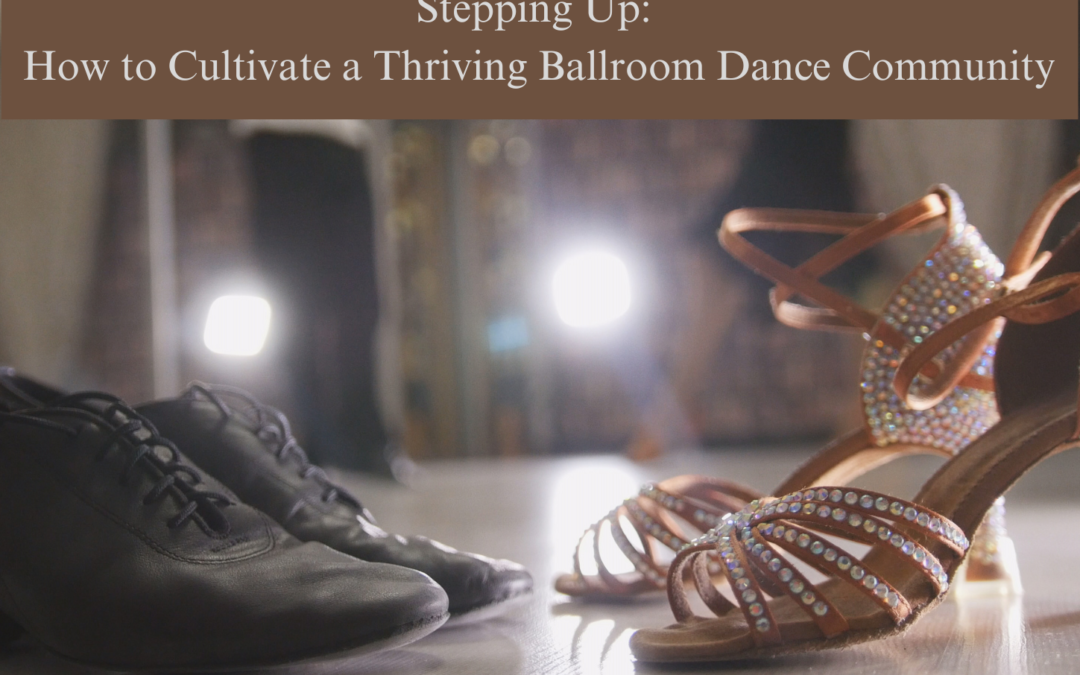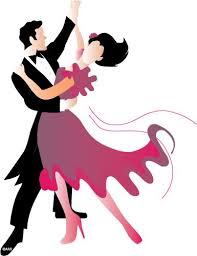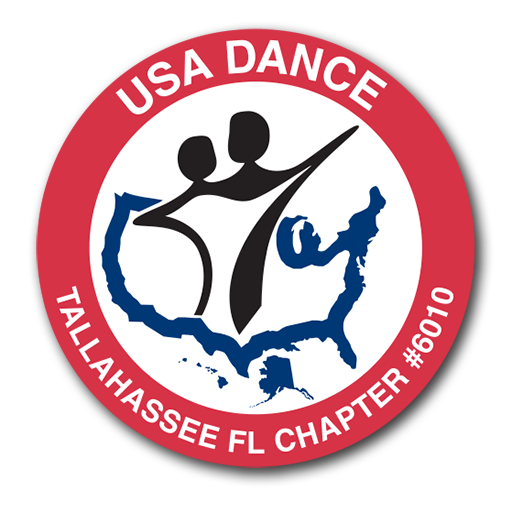
Next Monthly Dance
SOCIAL DANCING & LESSONS
For Group and Private Lessons information, please go to the About tab and select Local Information.
Articles & Other Dance News

Stepping Up: How to Cultivate a Thriving Ballroom Dance Community
Introduction: Ballroom dancing is not just about mastering the steps and gliding across the dance floor; it’s about the people you meet and the community you build. A strong ballroom dance community enhances the individual’s learning experience and provides a network of support and a shared passion for dance. This article explores practical ways to cultivate a thriving ballroom dance community that welcomes dancers of all levels and backgrounds.
1. Organize Regular Social Dances
Description: Social dances are the heartbeat of the ballroom community. They provide an informal, fun environment where dancers can practice their moves, try new styles, and enjoy dancing in a social setting.
Benefits: Regular social dances allow dancers to apply what they’ve learned in classes, gain confidence on the dance floor, and foster friendships within the community.
How to Implement: Start by scheduling monthly social dances at a local studio or community hall. Promote these events through social media, local dance schools, and flyers in community centers. Consider varying themes or music to keep the interest high.
2. Host Workshops and Bootcamps
Description: Workshops and boot camps with professional dancers or renowned instructors can be a game-changer for local dancers. These events provide insight into advanced techniques and the latest dance trends.
Benefits: Dancers get the opportunity to learn from the best, which can significantly boost their skills and motivation.
How to Implement: Reach out to professional dancers who tour and offer workshops. Plan these events well and market them through all available channels, including local dance clubs, online communities, and dance apparel stores.
3. Create a Mentorship Program
Description: A mentorship program pairs less experienced dancers with seasoned enthusiasts who can guide them through the nuances of dance etiquette, techniques, and community involvement.
Benefits: Newcomers feel welcomed and supported, which can help retain their interest and involvement in dancing.
How to Implement: Develop a sign-up system for mentors and mentees, possibly through an online form or at local dance studios. Organize regular meet-ups and check-ins to track progress and feedback.
4. Leverage Social Media and Online Platforms
Description: In today’s digital age, having an online presence is crucial. Use social media platforms to create a vibrant online community that mirrors the physical one.
Benefits: Expands the community’s reach, attracts new members, and keeps everyone informed and engaged.
How to Implement: Create engaging content such as dance tutorials, highlights from social dances, and upcoming event promos. Encourage community members to share their own content to increase interaction.
5. Encourage Youth Participation
Description: Getting young people involved in ballroom dancing can secure the community’s future. Introduce programs and events specifically tailored for children and teenagers.
Benefits: Cultivate a new generation of dancers who bring fresh energy and perspectives to the dance floor.
How to Implement: Offer school dance classes, arrange youth competitions, and provide family-friendly dance events. Consider offering discounts or scholarships to young dancers to ease financial barriers.
Conclusion: Building a thriving ballroom dance community requires commitment and creativity. You can create a welcoming and vibrant community by organizing regular events, offering learning opportunities, and embracing the digital world. Whether you’re a dance studio owner, an experienced dancer, or a newcomer to the scene, your efforts in fostering a supportive dance community can have a lasting impact.
Additional Resources:
- Books: “The Ballroom Dance Coach: Expert Strategies on Dance Floor Etiquette and Health” by Jessika Ferm is an excellent resource for anyone looking to deepen their understanding of ballroom culture.
- Online Forums: Websites like Dance-Forums.com and BallroomDancers.com are fantastic places to connect with other dancers, share experiences, and ask for advice.
- Local Dance Studios: Check out the National Dance Council of America’s website for a directory of dance studios in your area that offer classes and events to help you get involved in the local dance scene.
By nurturing these elements, you can ensure that the ballroom dance community survives and thrives, bringing joy and elegance to many generations.

Risk Liability Disclaimer:
By entering into or attending any USA Dance Events, (monthly dances, weekly lessons, workshops, Showcase performances, competitions, etc) it is understood, and you acknowledge that there are risks associated with dance and this event, which include by not limited to personal injury, risk of loss, or damage to property. USA Dance 6010; the Tallahassee Senior Center cannot be held liable for personal injury, risk of loss or damage to personal or stolen property, this includes risks associated with dance and this event, which include by not limited to personal injury, risk of loss, or to COVID-19, sustained by persons attending the event but not limited to, Board of Directors, volunteers, employees, vendors, sponsors or any other person acting on behalf of USA Dance, Inc, USA Dance 6010; and the Tallahassee Senior Center.
Participates voluntarily enters any event (competition, Dance Camp/Workshops; Showcase Performances and/or Social Dances, etc) assumes all these risks. Participates hereby swears that to the best of their knowledge they are physically and mentally to participate in this event.
The Tallahassee Senior Center is a non-smoking establishment.
USA Dance is not responsible for loss or theft of articles left in hotels, changing rooms, ballrooms, parking lot or other event facilities.
The ballroom is cool (when not dancing); please dress appropriately as no outer-wear jackets or coats and no large bags or backpacks are permitted in ballroom.
Persons not conforming to acceptable standards of behavior may, at the sole discretion of the chapter or event organizer, be asked to leave the event venue premises.


